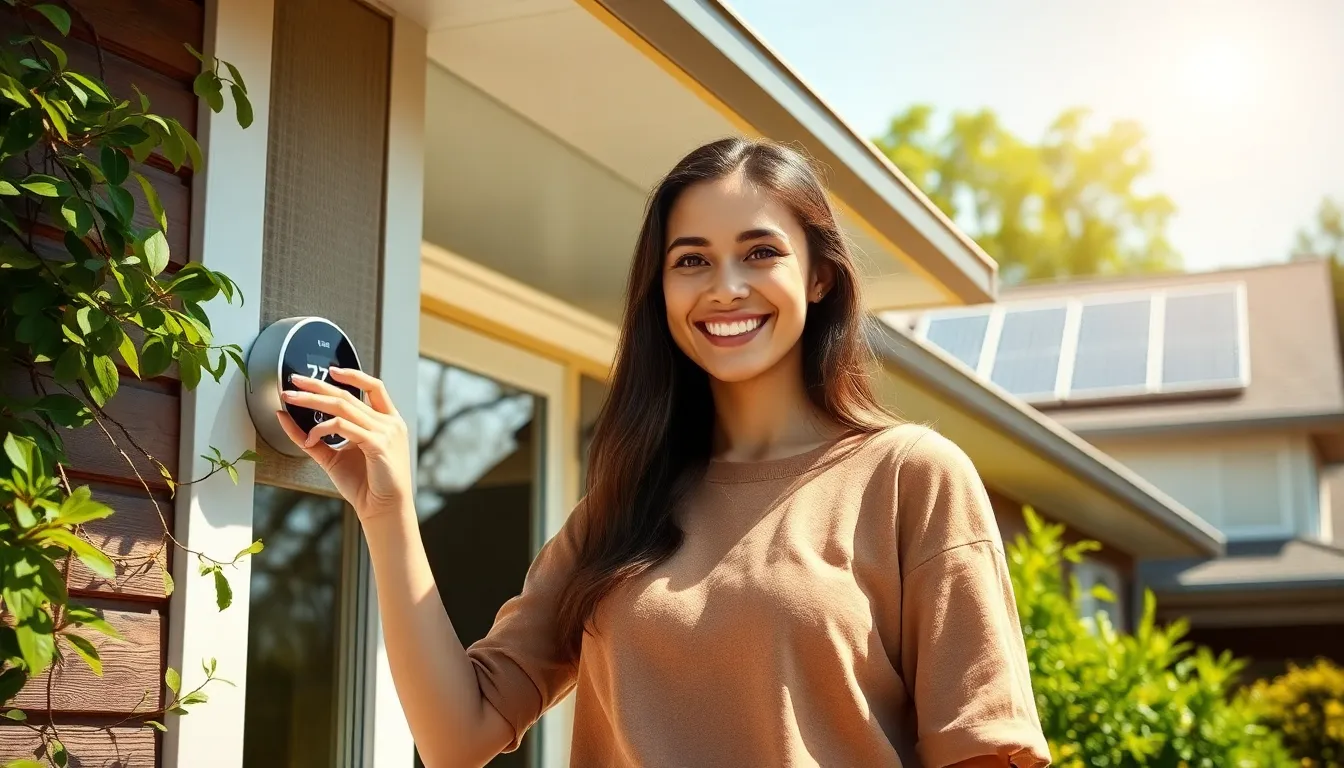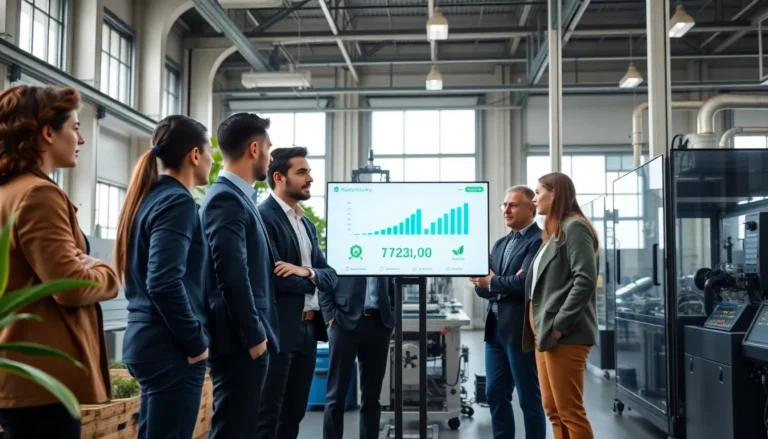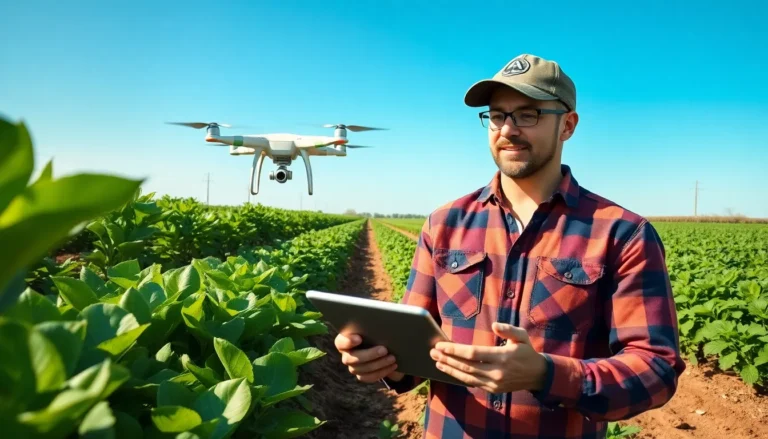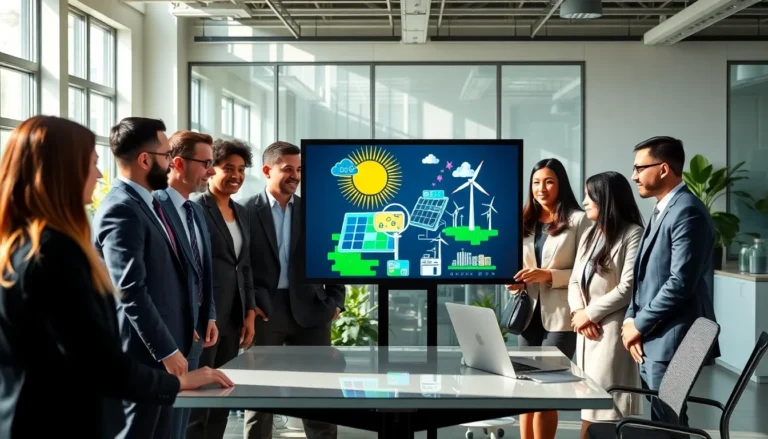Table of Contents
ToggleIn a world where the planet’s health is often overlooked, eco-efficient technology swoops in like a superhero, cape and all. Imagine gadgets that save energy while keeping your bills low and your conscience clear. It’s not just about saving the Earth; it’s about making life more convenient and, let’s be honest, a bit cooler.
From smart thermostats that know when you’re home to solar panels that turn sunshine into savings, eco-efficient tech is here to revolutionize how we live. It’s like having a personal assistant who not only helps you but also gives Mother Nature a high-five. So buckle up as we dive into the world of eco-friendly innovations that make sustainability not just a buzzword but a way of life.
Overview of Eco-Efficient Technology
Eco-efficient technology encompasses a range of innovations aimed at reducing energy consumption and minimizing environmental impact. These technologies include energy-efficient appliances, renewable energy sources, and smart home systems. Each plays a role in promoting sustainable living and conserving resources.
Energy-efficient appliances, such as ENERGY STAR-rated devices, significantly lower electricity usage compared to conventional models. Many homeowners benefit from reduced utility bills when switching to these appliances, which provide the same functionality while consuming less energy.
Solar panels exemplify how renewable energy technologies contribute to eco-efficiency. By harnessing sunlight, solar panels generate clean electricity that can power homes or feed back into the grid. This practice not only lowers reliance on fossil fuels but also helps mitigate greenhouse gas emissions.
Smart home systems represent another layer of innovation in eco-efficient technology. Devices like smart thermostats and automated lighting systems adapt energy usage based on occupancy and preference. Users enjoy increased comfort alongside significant energy savings, illustrating a practical approach to sustainable living.
Investing in eco-efficient technology proves beneficial for both individuals and the planet. Businesses adopting these technologies can improve sustainability while enhancing operational efficiency. Collectively, these advancements foster a shift towards a greener future, where economic growth and environmental stewardship coexist harmoniously.
Overall, eco-efficient technology signifies a proactive response to environmental challenges, aligning innovation with responsible resource management.
Benefits of Eco-Efficient Technology

Eco-efficient technology offers significant advantages for both the environment and the economy. These innovations drive sustainability while enhancing quality of life.
Environmental Impact
Eco-efficient technology reduces carbon footprints and fosters cleaner ecosystems. Energy-efficient appliances lead to lower electricity consumption, directly resulting in reduced greenhouse gas emissions. Renewable energy sources, like solar panels, generate sustainable electricity and decrease dependence on fossil fuels. Additionally, smart home systems optimize energy use based on real-time occupancy, cutting waste and encouraging responsible consumption. These changes support biodiversity and help combat climate change, significantly benefiting natural habitats.
Economic Advantages
Investing in eco-efficient technology brings considerable economic benefits. Households experience lower utility bills thanks to energy-efficient appliances, which can save hundreds annually. Renewable energy systems, although requiring upfront investment, offer long-term savings through reduced energy costs. Tax incentives and rebates for adopting eco-friendly systems further enhance financial returns. Additionally, jobs in the green technology sector are growing, driving economic development while supporting environmental initiatives. As a result, adopting eco-efficient technology leads to financial stability alongside environmental stewardship.
Examples of Eco-Efficient Technology
Eco-efficient technology includes various innovations that promote sustainability and resource conservation. The following sections highlight notable examples.
Renewable Energy Sources
Solar energy ranks among the most prevalent renewable energy sources. Photovoltaic cells convert sunlight directly into electricity, offering a sustainable alternative to fossil fuels. Wind energy also plays a vital role, with wind turbines generating power in eco-friendly ways. Geothermal systems harness heat from the Earth’s core, providing efficient heating solutions. Hydropower captures energy from flowing water, contributing to a significant portion of global electricity. Biomass refers to organic materials that, when burned, release energy, making it another renewable option. Each of these sources minimizes environmental impacts while supporting energy independence.
Sustainable Manufacturing Processes
Sustainable manufacturing processes focus on resource efficiency and waste reduction. Lean manufacturing techniques optimize production, reducing energy consumption and material waste. Additionally, closed-loop systems recycle materials within the production cycle, lessening the need for new raw materials. The use of eco-friendly materials in production minimizes environmental harm. Energy-efficient machinery contributes to these efforts by consuming less energy while maintaining high productivity. Certification programs, like ISO 14001, emphasize adherence to environmental management standards in manufacturing. Incorporating these practices fosters a more sustainable industrial landscape while enhancing overall operational efficiency.
Challenges in Implementing Eco-Efficient Technology
Implementing eco-efficient technology presents several challenges that can hinder progress toward sustainability. Financial constraints and technological barriers commonly arise in this context.
Financial Constraints
Financial challenges often impede the adoption of eco-efficient technology. High upfront costs frequently deter individuals and businesses from investing in these solutions. Residential solar panel installation, for example, may require significant initial investment despite long-term savings. Cash flow limitations can make it difficult for small businesses to allocate funds for energy-efficient upgrades. Furthermore, access to financing options varies widely, creating disparities in who can afford eco-friendly solutions. Public policies that support tax incentives or rebates also play a crucial role in mitigating these financial barriers.
Technological Barriers
Technological barriers contribute significantly to the slow adoption of eco-efficient technology. Many existing infrastructures lack compatibility with newer, energy-efficient technologies. Older buildings may require extensive renovations to integrate smart systems or renewable energy sources. Moreover, a scarcity of skilled professionals limits knowledge and expertise in implementing advanced eco-friendly solutions. Complicated installation processes often lead to increased project timelines and costs. In addition, concerns about the reliability and effectiveness of new technologies can lead to hesitation in adoption.
Future Trends in Eco-Efficient Technology
Emerging trends in eco-efficient technology indicate a promising shift toward sustainability and efficiency. Innovations that enhance energy efficiency are rapidly gaining traction.
Innovations on the Horizon
Smart grids represent a significant advancement in energy management. They use real-time data to optimize energy distribution, reducing waste. Advanced energy storage solutions, such as lithium-ion batteries, improve renewable energy usage by storing excess production for later use. Additionally, building-integrated photovoltaics (BIPV) create energy-efficient structures that blend solar power generation with traditional architecture. These technologies not only maximize space but also reduce reliance on external power sources. Vehicles equipped with electric and hybrid engines continue to reshape transportation, leading to reduced emissions. The integration of artificial intelligence in energy systems helps forecast energy demands, enhancing efficiency further.
Policy and Regulation Changes
Policy changes are critical for the growth of eco-efficient technology. Governments increasingly implement stricter regulations aimed at reducing greenhouse gas emissions. Incentives for adopting renewable energy sources, such as tax breaks and grants, encourage consumers and businesses to invest in sustainable solutions. Emission reduction targets set by international agreements drive countries to develop eco-friendly infrastructure. Furthermore, legislation promoting renewable energy standards helps ensure a gradual transition from fossil fuels. Support for green technology education fosters workforce development in this sector, ensuring a skilled labor force to meet future demands. Collaboration between public and private sectors enhances innovation, creating a more sustainable society.
Embracing eco-efficient technology is essential for creating a sustainable future. These innovations not only help reduce environmental impact but also enhance the quality of life through improved energy management and cost savings. As individuals and businesses increasingly adopt these technologies, they contribute to a cleaner planet and a robust economy.
The ongoing development of advanced solutions and supportive policies will further drive the transition toward greener practices. By prioritizing eco-efficient technology, society can address pressing environmental challenges while fostering economic growth. The path forward is clear—investing in these technologies is a crucial step toward a more sustainable and prosperous world.







